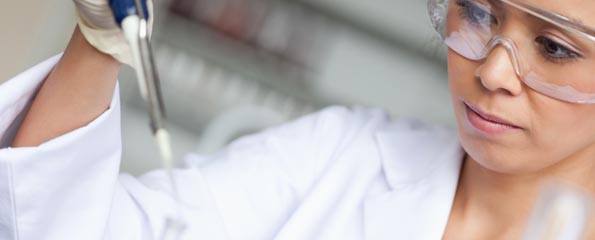Additive restores antibiotic effectiveness against MRSA
Researchers from North Carolina State University have increased the potency of a compound that reactivates antibiotics against methicillin-resistant Staphylococcus aureus (MRSA), an antibiotic-resistant form of Staphylococcus that is notoriously difficult to treat. Their improved compound removes the bacteria’s antibiotic resistance and allows the antibiotic to once again become effective at normal dosage levels.
NC State chemist Christian Melander had previously proven the effectiveness of a 2-aminoimidazole compound in reactivating antibiotics against resistant bacterial strains. However, the original compound was not potent enough. In his latest work, described in a paper appearing in Angewandte Chemie, Melander, research assistant professor Roberta Worthington and graduate student Tyler Harris have solved the potency issue, bringing them one step closer to in vivo testing.
“You measure antibiotic effectiveness by growing bacteria in the presence of an antibiotic,” Melander says. “The concentration you typically want to observe is about one microgram per milliliter or less of the antibiotic to halt bacterial growth. At that point the bacterial strain is considered susceptible to and treatable by that antibiotic. If a higher concentration of antibiotic is required to halt bacterial growth, the bacterial strain in question is considered untreatable. Some of the MRSA strains we work with require 512 micrograms per milliliter of the antibiotic of choice to control growth – 500 times over the limit. Adding our compound brought the level down to one microgram per milliliter again.”
The compound works by short-circuiting the bacteria’s ability to mount a defense against the antibiotic. When antibiotics interact with bacteria, receptors on the surface of the bacteria identify the antibiotic as a threat and the bacteria can then choose what to do to survive. MRSA either creates a biofilm or makes genetic changes that prevent the antibiotic from disrupting its cell structure. According to Melander, “We believe that our compound renders the bacteria unable to recognise the antibiotic as a threat, essentially stopping the defensive process before it can begin.”
(Source: NC State University)
Dates
Created by:

 Login
Login














